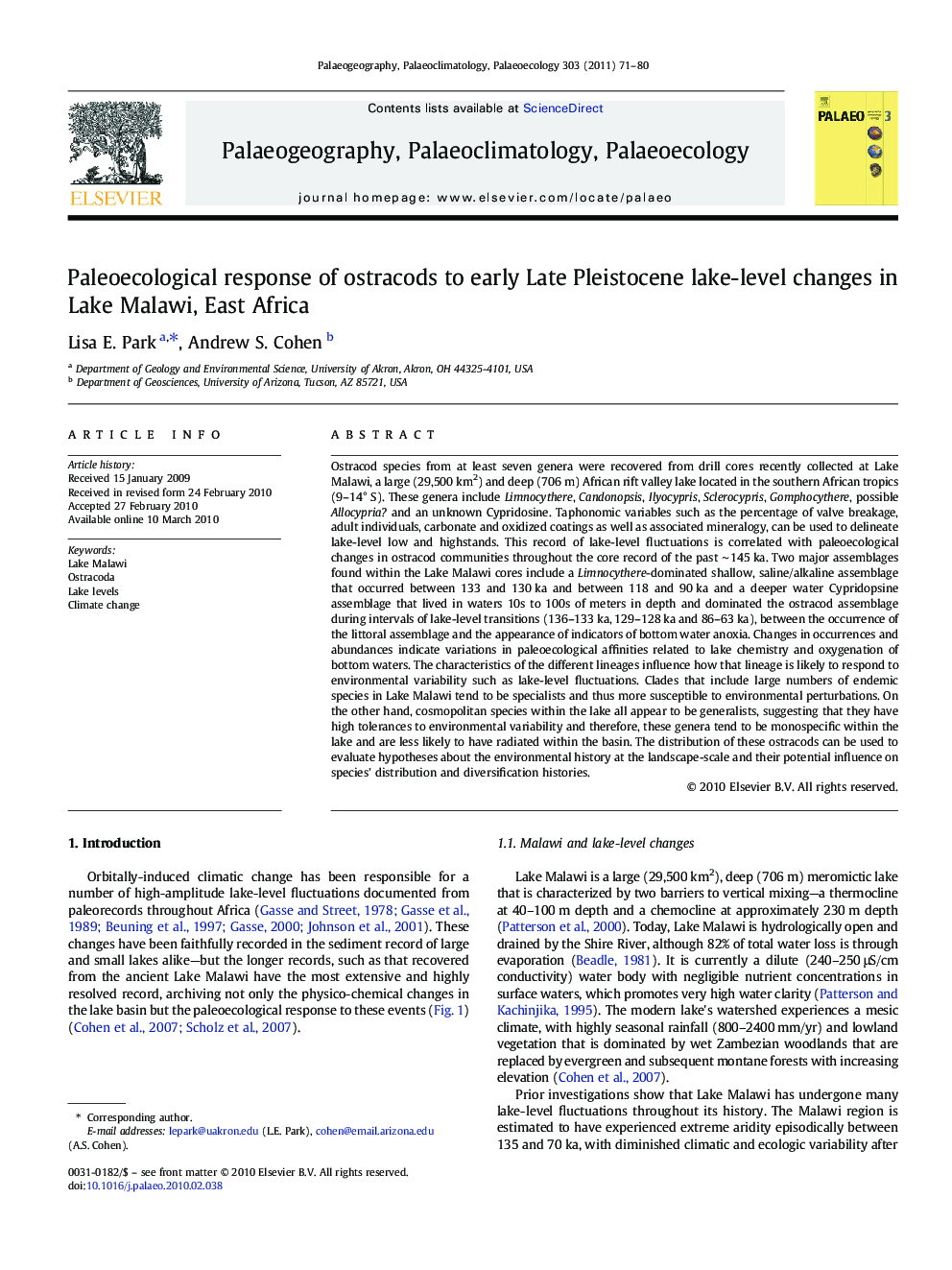| کد مقاله | کد نشریه | سال انتشار | مقاله انگلیسی | نسخه تمام متن |
|---|---|---|---|---|
| 4467336 | 1622259 | 2011 | 10 صفحه PDF | دانلود رایگان |

Ostracod species from at least seven genera were recovered from drill cores recently collected at Lake Malawi, a large (29,500 km2) and deep (706 m) African rift valley lake located in the southern African tropics (9–14° S). These genera include Limnocythere, Candonopsis, Ilyocypris, Sclerocypris, Gomphocythere, possible Allocypria? and an unknown Cypridosine. Taphonomic variables such as the percentage of valve breakage, adult individuals, carbonate and oxidized coatings as well as associated mineralogy, can be used to delineate lake-level low and highstands. This record of lake-level fluctuations is correlated with paleoecological changes in ostracod communities throughout the core record of the past ∼ 145 ka. Two major assemblages found within the Lake Malawi cores include a Limnocythere-dominated shallow, saline/alkaline assemblage that occurred between 133 and 130 ka and between 118 and 90 ka and a deeper water Cypridopsine assemblage that lived in waters 10s to 100s of meters in depth and dominated the ostracod assemblage during intervals of lake-level transitions (136–133 ka, 129–128 ka and 86–63 ka), between the occurrence of the littoral assemblage and the appearance of indicators of bottom water anoxia. Changes in occurrences and abundances indicate variations in paleoecological affinities related to lake chemistry and oxygenation of bottom waters. The characteristics of the different lineages influence how that lineage is likely to respond to environmental variability such as lake-level fluctuations. Clades that include large numbers of endemic species in Lake Malawi tend to be specialists and thus more susceptible to environmental perturbations. On the other hand, cosmopolitan species within the lake all appear to be generalists, suggesting that they have high tolerances to environmental variability and therefore, these genera tend to be monospecific within the lake and are less likely to have radiated within the basin. The distribution of these ostracods can be used to evaluate hypotheses about the environmental history at the landscape-scale and their potential influence on species' distribution and diversification histories.
Journal: Palaeogeography, Palaeoclimatology, Palaeoecology - Volume 303, Issues 1–4, 1 April 2011, Pages 71–80